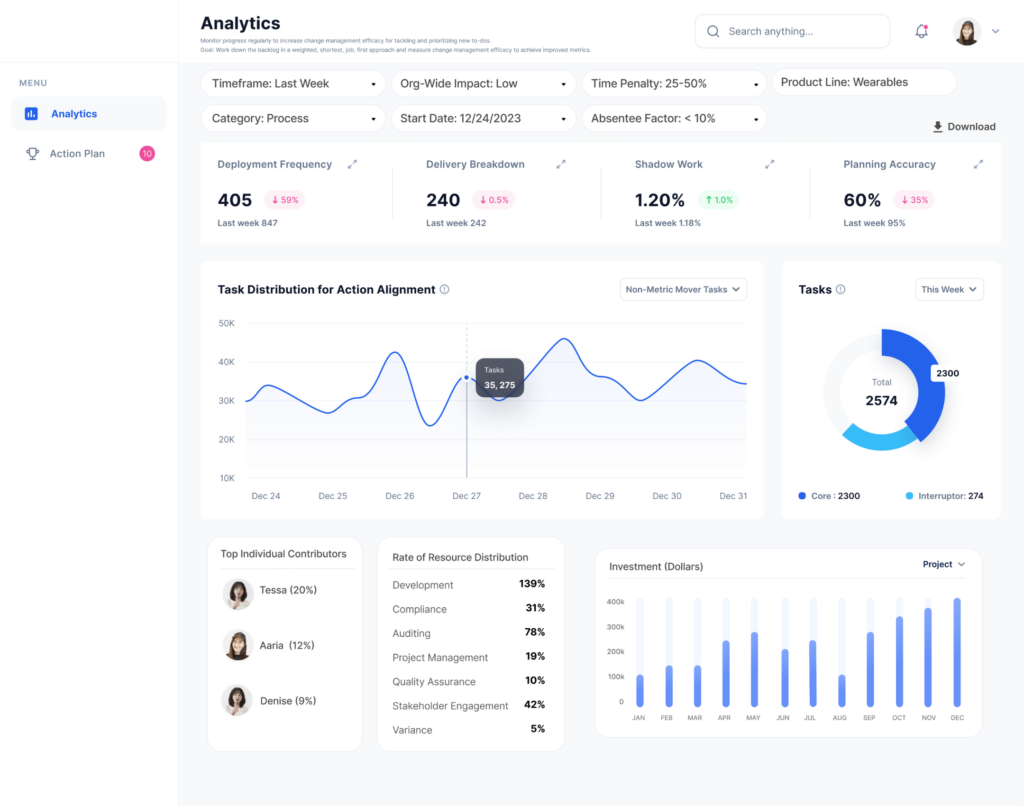As a leader of all things software and apps, the toggle between “strategy” and “emergency” can feel relentless: a continual balancing act to demonstrate progress against “shiny new objects” — today’s next newly prioritized initiatives intended to grow top-line, accelerate delivery and drive high-performance and quality of product and process — while also successfully navigating pressure to keep the lights on and core activities moving along.
Demands come from every direction — the board, executives, your peers and, perhaps most importantly, your customers. Yet the software factory is always on and never stops churning with increasing velocity as the “pipes” always seem to be one moment away from bursting. As leaders, the notion of knocking off a to-do never seems to make the list shorter; instead, it seems it just makes space for one more to-do to be added to your plate.
Today’s software leaders need to perfect the SDLC shuffle, which involves codifying two main balancing acts at all times:
- When you realize you have hit the “one project” that puts you over capacity, act today
- Wherever you are in terms of capacity at the moment, prioritize the right moves today to prepare for peak surges tomorrow
Today, we will focus on the former, and the specific steps you can take when you are at capacity. Because the reality is that as SDLC leaders, we’re always one new project, unexpected break, or resignation away from capacity overload. And when we do, we need to act fast and decisively.
Let’s dive into 3 steps to take when you’re at or beyond capacity and need to regain clarity of direction:
Step 1: 15 Minutes to Plot
When capacity overload is imminent or has arrived, perfect is the enemy of good. It’s not about spending six months to analyze how you got here, why, and how to prevent this from happening again. (We’ll unpack that entire paradigm another time).
Instead, it’s about diagnosing capacity issues fast and generating movement out of the toil. We recommend leveraging a 15-minute time box constraint.
To begin, jot down your top competing priorities across two core categories:
- Core, or the initiatives probably identified in the annual budget cycle)
- What we like to refer to as “Tactical Interrupters” — unscheduled work such as production outages, changes to meet new regulatory requirement, security breaches or newly identified vulnerabilities, etc.
When you’re done with that, map each Core or Interrupter task against two other variable types: Capability and Capacity. Think about all your conflicting priorities in Yes/No terms. Do you have the Capability and/or Capacity? When it comes to your internal team’s current capacity (bandwidth) and capabilities (expertise and skills) to absorb new priorities, pay attention to where your plotting lands.
To really visualize the impact of the time your team spends on core activities versus interrupter activities, click here to see how we think about visualizing the impact of this exercise via interactive dashboards and below for a quick dashboard teaser:

Step 2: Inventory Your Talent
With your backlog of stress documented and visualized, it’s time to shift our focus and take stock in your team and the resource ecosystem available to you. This includes internal resources as well as “reinforcements” you can bring in from other divisions and from business partners. This exercise is similar to step 1, but most likely achievable in 5 minutes or less. Again, build out a list of your resources using the following approach:
- Strategy/Vision: Do I need leadership, strategic thinking, an architect, etc., for solution?
- Implementation: Do I need something stood up that might not be defined yet—much less framed, a plan built and communicate, resources committed and ready to start
- Execution: Do I need high-powered, hyperspecialized, fit for purpose “doers” — sufficient experts who can drive towards deadlines and get things done, better and faster without a lot of ramp-up and handholding?
As you plot, a cautionary tale! Resources can always be in danger of over-allocation, so avoid temptation to make “wishful thinking” assignments. Instated, think in terms of how to move the pieces around the chess board—strategically and where they can operate at peak performance.
Once you know the category of effort and the skill sets you require for each initiative (more on that here), pathways forward emerge as do the obvious gaps in coverage. A few questions to consider as you decide WHO to aim at the issue:
- Am I simply moving my best, most trusted person to the fire? And if so, what new capacity gaps will that create elsewhere?
- Do I prefer to bring in new capacity and capabilities to my ecosystem of resources, or do I prefer to get more of my existing team and increase their capability to do the work — via skilling them up or pulling them up?
- Am I thinking about bandwidth horizontally and vertically? Does my team have the bandwidth and do I personally have the bandwidth?
Step 3: Activate
Now that you’ve ranked and prioritized your needs, and you’ve inventoried those needs against your resource pool, it’s time to spring to action. This phase is all about moving fast, iterating as you go, and keeping the desired outcome at the core of the focus.
Something that can be helpful in this phase is to never lose sight of the steep impact to the business — and your leadership — if you don’t move fast enough. Consequences that come in the form of things like…
- Missed deadlines
- Degraded customer experience
- New release rollbacks
- Showstopper outages
- Impacted team morale
- Stakeholder and leadership loss of confidence
- Penalties and fines
- Compromise of data, including proprietary information
- Revenue loss
- Market share loss
- Damage to key business partnerships
By understanding the impact that comes from a lack of action, you can inspire your team to stay in activation state of mind versus backlog/problem in-take. The goal in this phase is to shift from a state of endless overwhelm, and focus instead on practical solutions that bring speed to resolution and a return to focus on next.
No doubt that the toggle is messy, noisy, loud, and conflicting. And yet, when you reach peak capacity, there are some really simple and fast steps you can take to reduce the noise, contain it, and do immediate damage control.
Reduce the pain, get back to Core. Speed to action is how you get back on track.
Need some immediate capacity/capability support? Has this latest project put you and your team over the limit? Click here to get connected to our team and learn how we can help you solve the acute 911, while getting ahead of your next peak loads to reduce risk for tomorrow.

